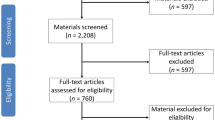Abstract
Guidelines and preventive measures have been established to limit radiation exposure time during modified barium swallow studies (MBSS) but multiple variables may influence the duration of the exam. This study examined the influence of clinician experience, medical diagnosis category, swallowing impairment severity, and use of a standardized protocol on fluoroscopy time. A retrospective review of 739 MBSSs performed on 612 patients (342 males/270 females; age range = 18–96 years) completed in 1 year at the Medical University of South Carolina was performed with IRB approval. All studies were completed by speech-language pathologists trained in the data collection protocol, interpretation, and scoring of the MBSImP™©. Medical diagnosis category, swallowing impairment severity (MBSImP™© score), clinician experience, and fluoroscopy time were the variables recorded for analysis. Fluoroscopy time was not significantly associated with medical diagnosis category (p = 0.10). The severity of the MBSImP™© Oral Total and Pharyngeal Total resulted in statistically significant increases in fluoroscopy time (p < 0.05). Studies by novice clinicians had longer exposure times when compared to those of experienced clinicians (p = 0.037). Average radiation exposure time using the MBSImP™© approach was 2.9 min, with a 95 % confidence interval of 2.8–3.0 min, which was well within the range of exposure times reported in the literature. This study provides preliminary information regarding the impact of medical diagnosis category, swallowing impairment severity, and clinician experience on fluoroscopy time. These findings also suggest that a thorough, standardized protocol for MBSSs did not cause unnecessary radiation exposure time during the MBSS.

Similar content being viewed by others
References
Lovell SJ, Wong HB, Loh KS, Ngo RY, Wilson JA. Impact of dysphagia on quality of life in nasopharyngeal carcinoma. Head Neck. 2005;27(10):864–72.
Palmer JB, Drennan JC, Baba M. Evaluation and treatment of swallowing impairments. Am Fam Physician. 2000;61:2453–62.
Howden CW. Management of acid-related disorders in patients with dysphagia. Am J Med. 2004;117(5A):44S–8S.
Domenech E, Kelly J. Swallowing disorders. Med Clin North Am. 1999;83(1):97–113.
Dodds WJ, Logemann JA, Stewart ET. Radiologic assessment of abnormal oral and pharyngeal phases of swallowing. AJR Am J Roentgenol. 1990;154(5):965–74.
Ekberg O, Sigurjonsson SV. Movement of the epiglottis during deglutition. A cineradiographic study. Gastrointest Radiol. 1982;7(2):101–7.
Martin-Harris B, Logemann JA, McMahon S, Schleicher M, Sandidge J. Clinical utility of the modified barium swallow. Dysphagia. 2000;15(3):136–41.
Ramsey GH, Watson JS, Gramiak R, Weinberg SA. Cinefluorographic analysis of the mechanism of swallowing. Radiology. 1955;64(4):498–518.
Logemann JA. Behavioral management for oropharyngeal dysphagia. Folia Phoniatr Logop. 1999;51(4–5):199–212.
Moro L, Cazzani C. Dynamic swallowing study and radiation dose to patients. Radiol Med. 2006;111(1):123–9.
McLean D, Smart R, Collins L, Varas J. Thyroid dose measurements for staff involved in modified barium swallow exams. Health Phys. 2006;90(1):38–41.
Hayes A, Alspaugh JM, Bartelt D, Campion MB, Eng J, Gayler BW, Henkel SE, Jones B, Lingaraj A, Mahesh M, Rostkowski M, Smith CP, Haynos J. Radiation safety for the speech-language pathologist. Dysphagia. 2009;24(3):274–9.
Wright RE, Boyd CS, Workman A. Radiation doses to patients during pharyngeal videofluoroscopy. Dysphagia. 1998;13:113–5.
Chan CB, Chan LK, Lam HS. Scattered radiation level during videofluoroscopy for swallowing study. Clin Radiol. 2002;57(7):614–6.
Weir KA, McMahon SM, Long G, Bunch JA, Pandeya N, Coakley KS, Chang AB. Radiation doses to children during modified barium swallow studies. Pediatr Radiol. 2004;37(3):283–90.
Zammit-Maempel I, Chapple CL, Leslie P. Radiation dose in videofluoroscopic swallow studies. Dysphagia. 2007;1:13–5.
Chau KH, Kung CM. Patient dose during videofluoroscopy swallowing studies in a Hong Kong public hospital. Dysphagia. 2009;24(4):387–90.
Nuclear Regulatory Commission Regulations. Title 10 Code of Federal Regulations, Part 20: Standards for protection against radiation. Section 20.1003 Definitions. 2007. http://www.nrc.gov/reading-rm/doc-collections/cfr/part020/.
Bushberg JT, Seibert JA, Leidholdt EM, Boone JM. The essential physics of medical imaging. 2nd ed. Philadelphia: Lippincott Williams & Wilkins; 2001.
Huda W. What ER radiologists need to know about radiation risks. Emerg Radiol. 2009;16(5):335–41.
Crawley MT, Savage P, Oakley F. Patient and operator dose during fluoroscopic examination of swallow mechanism. Br J Radiol. 2004;77(920):654–6.
Steele CM, Murray J. Radiation awareness and practices among speech-language pathologists. Perspect Swallowing Swallowing Disord. 2004;13(3):2–4.
Martin-Harris B, Jones B. The videofluorographic swallowing study. Phys Med Rehabil Clin N Am. 2008;19(4):769–85.
Jorgensen JE, Rubenstein JH, Goodsitt MM, Elta GH. Radiation doses to ERCP patients are significantly lower with experienced endoscopists. Gastrointest Endosc. 2010;72(1):58–65.
Martin-Harris B, Brodsky M, Michel Y, Castell D, Schleicher M, Sandidge J, Maxwell R, Blair J. MBS measurement tool of swallow impairment-MBSImp: establishing a standard. Dysphagia. 2008;22(4):392–405.
Hintze J. PASS 2008. Kaysville, UT:NCSS, LLC, 2008. Available at www.ncss.com.
Acknowledgments
This work was supported by Grants K23 DC005764-05 NIH/NIDCD, KL2 UL1 RR029880 NIH/NCRR, and Bracco Diagnostics. This work was also supported in part by the Biostatistics and Clinical Trials Shared Resource, Hollings Cancer Center, Medical University of South Carolina (P30 CA138313). Other financial or material support was provided by Evelyn Trammell Voice and Swallowing Institute and Northern Speech Services.
Author information
Authors and Affiliations
Corresponding author
Rights and permissions
About this article
Cite this article
Bonilha, H.S., Humphries, K., Blair, J. et al. Radiation Exposure Time during MBSS: Influence of Swallowing Impairment Severity, Medical Diagnosis, Clinician Experience, and Standardized Protocol Use. Dysphagia 28, 77–85 (2013). https://doi.org/10.1007/s00455-012-9415-z
Received:
Accepted:
Published:
Issue Date:
DOI: https://doi.org/10.1007/s00455-012-9415-z




